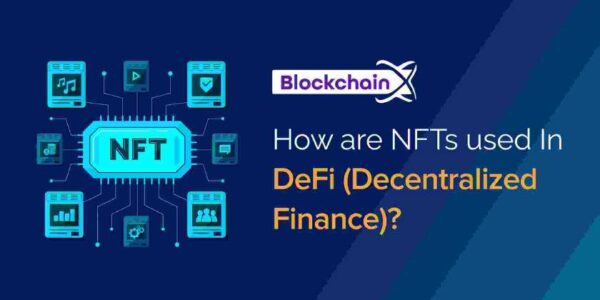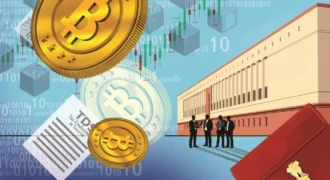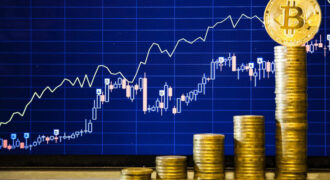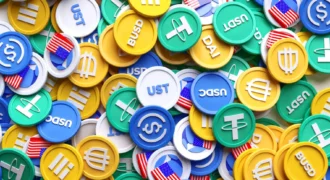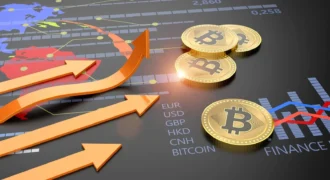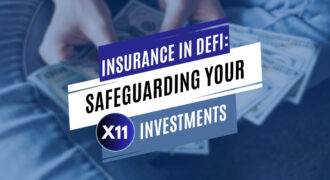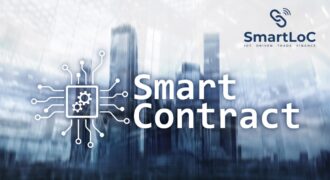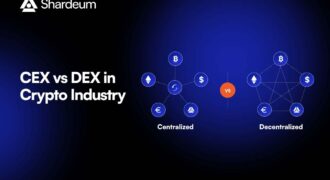The cryptocurrency ecosystem has grown far beyond simple peer-to-peer transactions. Two of the most groundbreaking innovations—Non-Fungible Tokens (NFTs) and Decentralized Finance (DeFi)—have already transformed art, gaming, and digital ownership. Now, these two domains are converging, giving rise to novel financial models that blend scarcity, utility, and decentralized liquidity.
The fusion of NFTs and DeFi is redefining how assets are created, traded, and leveraged, creating opportunities for investors, creators, and institutions alike.
The Basics: NFTs and DeFi
NFTs are unique digital assets representing ownership of items such as art, collectibles, music, virtual real estate, or gaming items. Each NFT is distinct, indivisible, and verifiable on a blockchain, allowing for digital scarcity and provenance.
DeFi, on the other hand, is a decentralized financial ecosystem where users can lend, borrow, trade, and earn yields without intermediaries. DeFi relies on smart contracts and liquidity pools to automate financial services.
The convergence of these two innovations—NFTs as unique, tradable assets and DeFi as programmable finance—has created new paradigms in investing, lending, and liquidity management.
Key Mechanisms Driving the Convergence
- NFT Collateralization
Traditionally, loans require standardized, fungible assets as collateral. Now, platforms like NFTfi allow users to use NFTs as collateral to secure loans, enabling liquidity without selling the asset. This opens up financial access for NFT holders, who can leverage their collections while maintaining ownership. - Fractionalization of NFTs
High-value NFTs are often illiquid due to their cost. Fractionalization splits an NFT into multiple tokens, each representing a share of ownership. Platforms such as Fractional.art allow investors to buy, trade, and earn dividends on fractions of rare NFTs, combining liquidity and community investment with traditional DeFi principles. - NFT-Backed Yield Farming
Innovators are experimenting with yield-bearing NFTs, where owning certain NFTs entitles holders to staking rewards, interest, or governance rights. This model blends scarcity with passive income opportunities, offering financial incentives beyond traditional asset appreciation. - NFT-Based Derivatives and Synthetic Assets
DeFi protocols are creating synthetic derivatives pegged to NFTs. These instruments allow investors to gain exposure to NFT value without holding the underlying asset, providing hedging opportunities and broadening market participation. - Tokenized Utility and Access
Some NFTs now function as keys to DeFi services, exclusive events, or digital content. Ownership grants access to staking programs, voting rights, or premium investment opportunities, merging the collectible and functional aspects of digital assets.
Benefits of NFT-DeFi Integration
- Liquidity for Illiquid Assets: NFT holders can unlock the value of their assets without selling, increasing market fluidity.
- Increased Investor Participation: Fractionalization lowers entry barriers, enabling broader investment in high-value NFTs.
- Programmable Incentives: Smart contracts allow automatic distribution of rewards, royalties, or dividends, aligning creator and investor interests.
- Innovative Financial Products: NFT-based lending, synthetic assets, and staking create entirely new classes of investment vehicles.
- Community Engagement: Fractional ownership and NFT staking often encourage collaboration, governance participation, and social investment, strengthening network effects.
Challenges and Risks
While the convergence of NFTs and DeFi offers significant opportunities, there are risks:
- Volatility: NFT prices are highly speculative, and fluctuations can impact DeFi-backed loans and yields.
- Smart Contract Vulnerabilities: Platforms integrating NFTs with DeFi are susceptible to coding errors, hacks, or exploits.
- Regulatory Uncertainty: Fractionalization, tokenized ownership, and NFT-backed loans may attract scrutiny from regulators.
- Valuation Complexity: Determining fair value for NFTs is challenging, complicating lending, collateralization, and derivative pricing.
- Market Liquidity: Even with fractionalization, some NFT markets may lack sufficient buyers, potentially trapping capital.
Investors must balance innovation with caution, conducting thorough research and risk assessment before participating in NFT-DeFi models.
Case Studies Illustrating NFT-DeFi Convergence
- NFTfi – One of the earliest platforms allowing NFT owners to take crypto-backed loans, keeping ownership of their digital assets while accessing liquidity.
- Fractional.art – Enables fractional ownership of high-value NFTs, unlocking liquidity and enabling collective investment opportunities.
- Yield Guild Games (YGG) – Integrates NFTs with DeFi by allowing users to stake gaming NFTs and earn tokens, effectively turning in-game assets into yield-generating financial instruments.
- Aavegotchi – Combines DeFi mechanics with NFTs, allowing users to stake crypto and enhance NFT utility, blending collectibles with yield farming.
These platforms demonstrate the versatility and financial potential of integrating NFTs with DeFi services.
The Future of NFT-DeFi Integration
The marriage of NFTs and DeFi is poised to reshape digital finance, and several trends are emerging:
- Interoperable NFT Markets: Cross-chain NFT DeFi platforms will enhance liquidity and broaden access.
- Insurance Protocols for NFTs: DeFi-style insurance could mitigate risks associated with NFT-backed loans and fractionalized assets.
- DAO-Driven NFT Investment Funds: Decentralized autonomous organizations (DAOs) may govern collective NFT investments, leveraging both community decision-making and financial incentives.
- Enhanced Gamification: NFTs tied to DeFi may expand into gaming, virtual worlds, and metaverse economies, where assets are both collectible and yield-bearing.
- Regulatory Clarity: As legal frameworks evolve, NFT-DeFi models may gain institutional credibility, attracting new investors.
By combining the uniqueness of NFTs with the programmable liquidity of DeFi, these innovations are not only creating new financial models but also paving the way for a more inclusive, participatory digital economy.
Conclusion
The convergence of NFTs and DeFi represents a paradigm shift in digital finance. By integrating scarcity, ownership, and liquidity, these new models enable investors to unlock value, participate in innovative financial mechanisms, and access previously unavailable markets.
While challenges such as volatility, regulatory uncertainty, and smart contract risks remain, the potential for new financial instruments, fractional ownership, and NFT-backed yields is enormous.
For creators, investors, and blockchain enthusiasts, understanding NFT-DeFi integration is not just about following trends—it’s about participating in the next generation of decentralized finance, where digital assets are not only collectibles but also powerful financial tools.
NFT-DeFi convergence promises to redefine how we create, trade, and leverage digital assets, blending culture, technology, and finance in ways never seen before.

